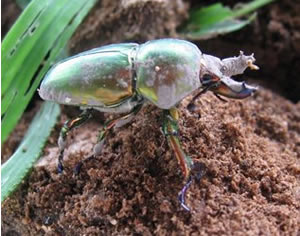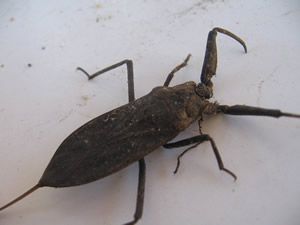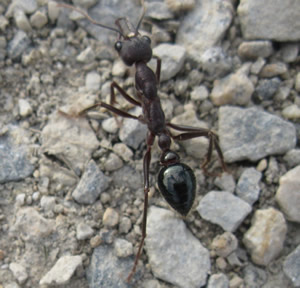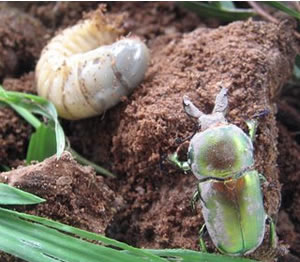Life in rotting wood and in the soil.

The grub shown on the right is an immature beetle. The grub will soon transform into the beetle via a process called metamorphosis.
What does the immature beetle (grub) eat?
Many
different types of cockroaches exist. Look at the cockroach on the right.
Does it remind you of any particular prehistoric creature. Trilobite maybe?
Click the picture to see a magnified view.
Can you identify the tiny holes (spiracles) through which the insect breathes?
The
underside of the insect is shown on the right.
Click the picture for a magnified view.
Can you identify the:
-head;
-thorax;
-abdomen.
Which body part are the legs
attached to?
Does the cockroach have many segments?
Many insects have a hard exoskeleton which offers protection from predators. However, insects are vulnerable when they are upside down. Many insects employ different strategies to right themselves.
Can you identify this insect?
Its common name is a "Click beetle". Why is it called Click
beetle?
Should this beetle land on its back it has the ability to flip itself upwards with a sharp clicking sound until it lands right way up. Hence its name Click beetle.

Identify
this particular insect.
Does it have a segmented body? Click to
see the underside of the insect.
What does it feed on?


Does it have jointed legs?
Does it have a segmented body?
How many body segments does it have?
Does it have jointed antennae ?
How many pairs of legs does it have?
Is its body covered in hair? Why?




